Understanding the Complex Landscape of Caregiver Burden and Support
Taking care of children with disabilities entails profound physical, emotional, social, and financial demands on caregivers. This narrative explores comprehensive statistics, research findings, and real-world challenges that illuminate the caregiver burden and the accessibility of support systems. It provides a detailed portrait of the caregiving experience, highlighting key factors influencing burden, health impacts, demographic vulnerabilities, and evolving support service trends, while identifying critical gaps and opportunities for policy and practice improvements.
The Multifaceted Burden Experienced by Caregivers of Children with Disabilities

What is the overall burden experienced by caregivers of children with disabilities?
Caregivers of children with disabilities face a heavy load across various aspects of their lives. This burden is not just physical but also emotional, social, and financial. They often have to manage complex health needs, coordinate multiple services, and deal with societal stigma that can limit their social interactions.
Physically, caregivers frequently experience fatigue, musculoskeletal pain, disturbed sleep, and are at higher risk for developing chronic health issues such as hypertension and obesity. These physical strains stem from the demanding nature of caregiving, especially for children with severe disabilities requiring intensive support.
Emotionally, caregivers are vulnerable to depression, anxiety, and feelings of hopelessness. Persistent stress from caregiving responsibilities can take a toll on mental health, leading to depression symptoms and emotional exhaustion.
Socially, the demands of caring for a child with special needs can lead to social withdrawal, reduced participation in community activities, and feelings of isolation. Financially, many caregivers face increased expenses for medical care, therapies, specialized equipment, and transportation, often without adequate support.
The severity of the child's functional limitations significantly amplifies the caregiver's burden. When children have significant disabilities, caregivers tend to spend more time and resources providing necessary support, which further impacts their health and wellbeing.
This comprehensive burden calls for more robust support systems and targeted interventions. Approaches such as psychological counseling, respite care, and caregiver training can help alleviate some of these challenges, ultimately improving the quality of life for both caregivers and their children.
Prevalence and Influencing Factors of Caregiver Burden in Families with Disabled Children
 Statistics repeatedly highlight that a large percentage of families caring for children with disabilities face significant caregiving challenges. Studies indicate that approximately 81.5% of caregivers report experiencing moderate to severe burden, reflecting the widespread nature of this issue.
Statistics repeatedly highlight that a large percentage of families caring for children with disabilities face significant caregiving challenges. Studies indicate that approximately 81.5% of caregivers report experiencing moderate to severe burden, reflecting the widespread nature of this issue.
Several factors play a role in shaping the level of caregiver burden. The severity of the child's disability is a primary determinant; children with more severe physical impairments—such as higher scores on the Gross Motor Function Classification System (GMFCS)—and those with neuropsychiatric conditions tend to increase the strain on caregivers.
Caregivers' mental health status, particularly depression and fatigue, significantly influence their experience of burden. When caregivers experience symptoms of depression or chronic fatigue, their perceived support system weakens, and stress levels escalate.
Socioeconomic elements further contribute to caregiver stress. Lower household income, limited educational opportunities, and extended caregiving hours are associated with higher levels of burden. Conversely, access to social support networks, community resources, and respite care can alleviate some of these stresses.
The type of disability also impacts caregiver well-being. Children with congenital or chronic conditions such as autism, cerebral palsy, or other developmental disorders are linked with higher caregiver depression and anxiety, often compounded by social discrimination and the complexities of long-term care.
The multi-faceted nature of caregiver burden encompasses child-specific, caregiver health, and social support dimensions. This multidimensionality underscores the importance of comprehensive programs that combine medical, psychological, and social interventions to support families.
| Aspect | Influence on Burden | Additional Notes |
|---|---|---|
| Child disability severity | Higher severity correlates with increased caregiver stress | Measured by physical and neuropsychiatric impairment levels |
| Caregiver mental health | Depression and fatigue lead to greater perceived burden | Key targets for psychological interventions |
| Socioeconomic factors | Low income, less education, more caregiving hours elevate burden | Financial hardship exacerbates stress |
| Disability type | Congenital/chronic conditions increase depression and anxiety | Especially relevant for autism, cerebral palsy, etc. |
| Support structures | Social support reduces impact; lack thereof heightens burden | Respite care, community groups, and training help mitigate stress |
Recognizing these factors emphasizes the need for targeted support strategies. Initiatives that improve access to resources, mental health services, and caregiver education are vital. As caregiver burden is influenced by a complex interplay of child, caregiver, and social factors, multi-pronged approaches are essential to reducing stress and improving quality of life for these families.
The Health and Well-Being Impact on Caregivers of Children with Special Health Needs
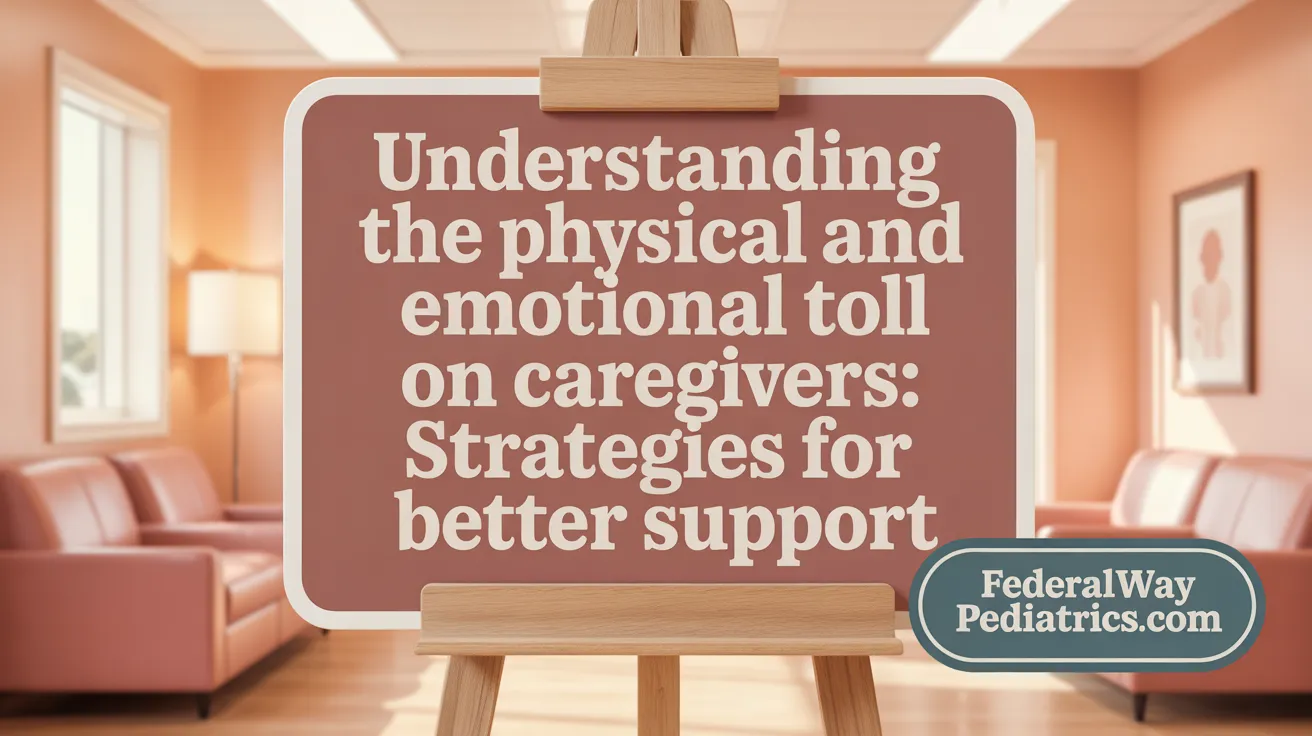
How does caregiving impact the health and well-being of caregivers of children with special health needs?
Caregivers of children with special health needs face considerable physical, emotional, and economic challenges. The physical toll is evident through issues like fatigue, body pain, sleep problems, and chronic conditions such as obesity and heart disease. Studies show that up to 25.5% of caregivers experience chronic non-cancer pain, and those with a high caregiving burden are more likely to develop such issues.
Emotionally, caregivers often grapple with persistent anxiety, depression, and feelings of guilt. Psychological distress increases with the severity of the child's condition and the caregiver’s own mental health diagnoses. This emotional strain can lead to reduced quality of life, with only around 44-52% of parents reporting excellent or very good health.
Caregiving demands also adversely affect workforce participation. Many caregivers leave employment or reduce work hours, leading to financial hardship. Approximately 50% of families bear financial burdens due to additional health services, medications, and specialized needs. Furthermore, the fragmentation of healthcare systems often makes managing care complex, adding to emotional exhaustion.
Certain factors escalate these health risks. Obesity, pre-existing physical disabilities, mental health issues, and caring for children with severe limitations significantly increase the likelihood of chronic pain and health problems.
Factors influencing caregiver health include:
- Physical health decline
- Elevated levels of chronic pain
- Mental health issues such as anxiety and depression
- Reduced work engagement and financial instability
- Obesity, disability, and mental health diagnosis heighten risk
Overall, the continuous physical and psychological demands of caring for children with special needs pose serious risks to caregiver health and well-being, emphasizing the importance of targeted support and intervention strategies.
Psychological and Physical Stresses Among Caregivers of Children with Disabilities
What psychological and physical stresses are commonly reported by caregivers of children with disabilities?
Caregivers of children with disabilities frequently face intense psychological challenges. Anxiety, depression, feelings of hopelessness, and emotional exhaustion are common, with studies indicating that around 21% experience significant psychological distress. These emotional burdens stem from constant caregiving demands, uncertainty about the child's future, and concerns over their child's health and development.
Physically, caregivers often suffer from fatigue, musculoskeletal pain, sleep disturbances, and more specific health complaints such as migraines and high blood pressure. These issues are often linked to the physical aspects of caregiving, including lifting, repositioning, and supporting their children through daily activities. The physical strain can worsen over time, leading to chronic health problems that further hinder their ability to care effectively.
Social isolation and stigma also play vital roles in increasing caregiver stress. Many caregivers report feeling marginalized or misunderstood, which limits their social activities and support networks. This social withdrawal can intensify feelings of loneliness, depression, and burnout.
Financial strain is another critical factor contributing to caregiver stress. High healthcare costs, medication expenses, and loss of income due to caregiving responsibilities affect many families. The financial pressure not only causes anxiety but can also lead to mental health issues like depression and helplessness.
The impact of these stresses is often exacerbated during crises such as the COVID-19 pandemic. Lockdowns and service disruptions have heightened feelings of isolation, reduced access to support services, and increased caregiver burden.
Overall, the psychological and physical toll on caregivers underscores the need for comprehensive support systems that address emotional well-being, physical health, social inclusion, and financial stability. Tailored interventions can help mitigate these stresses and improve the quality of life for both caregivers and the children they support.
Trends and Patterns in Support Service Utilization by Caregivers of Disabled Children
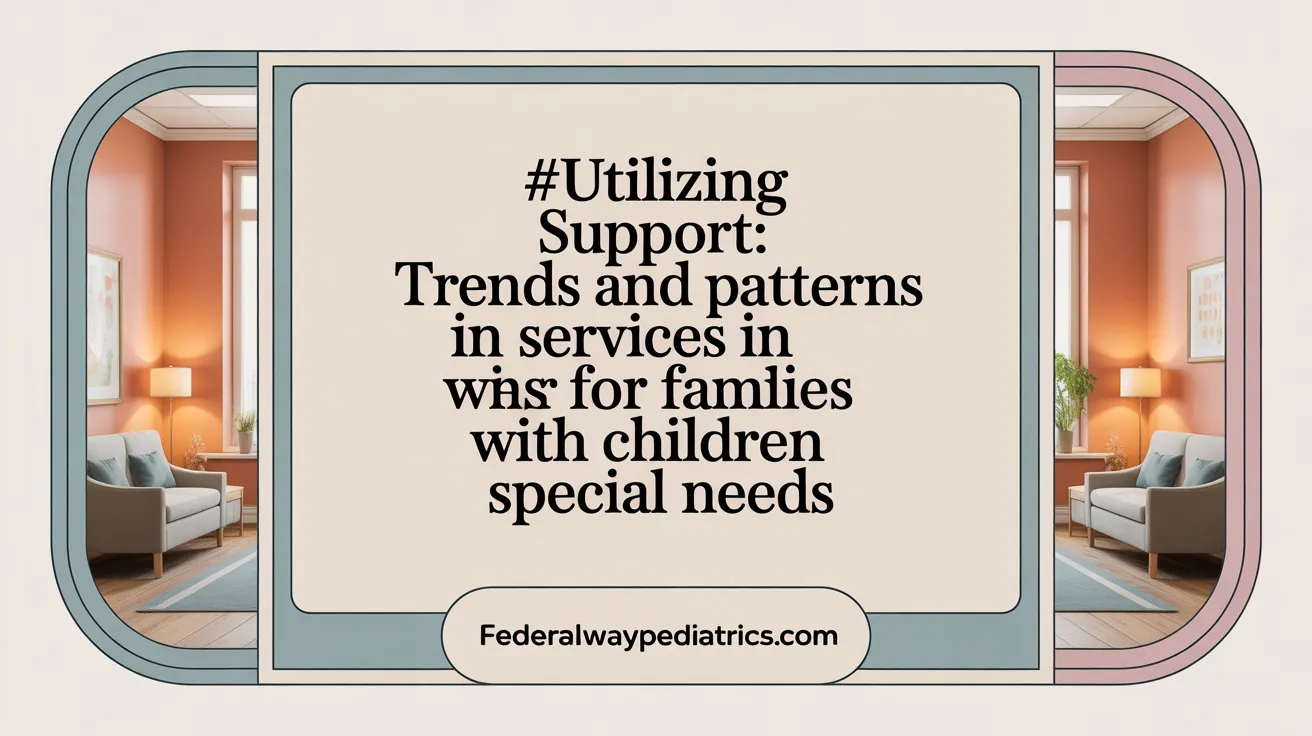
What are the current trends and patterns in how caregivers of children with disabilities utilize support services?
Recent data reveal that caregivers of children with disabilities are increasingly engaging with a broad spectrum of support services. These include healthcare, educational assistance, social support programs, and community-based resources. The utilization of these services is becoming more strategic, emphasizing holistic and culturally sensitive approaches to meet diverse family needs.
Multicomponent interventions—combining education, counseling, and peer support groups—are proving particularly effective in alleviating caregiver burden. Programs offering tailored support for specific conditions, such as autism spectrum disorder, demonstrate improved outcomes for both children and caregivers. Education initiatives help caregivers understand their child's condition, while counseling and peer groups provide emotional support, reduce feelings of isolation, and build coping skills.
Utilization patterns often depend on factors like awareness of available services, access barriers, and cultural attitudes towards disabilities and seeking help. Caregivers from underserved populations face additional hurdles due to systemic disparities, such as limited availability of culturally appropriate services and transportation issues.
Evidence suggests that integrated community and healthcare services foster better engagement and outcomes. These comprehensive systems are designed to coordinate care across multiple disciplines, addressing the medical, educational, and social needs of children with disabilities. Despite progress, persistent unmet needs remain, especially regarding navigation and coordination of services.
In summary, the trend is moving toward more inclusive, culturally sensitive, and multifaceted support frameworks. The goal is to empower caregivers, improve child well-being, and reduce systemic barriers, but ongoing challenges highlight the need for continuous improvement in service accessibility and relevance.
Demographic and Caregiver Characteristics Linked to Highest Caregiver Burden
Which characteristics and demographics are associated with caregivers experiencing the highest levels of burden?
Caregivers facing the greatest burdens are often women, particularly mothers, due to traditional gender roles that primarily assign child care responsibilities to females. These caregivers are more likely to be single parents, which reduces their social support networks and increases their stress levels.
Economic factors also play a significant role. Caregivers with low income and limited educational attainment often have fewer resources to access supportive services, increasing their caregiving challenges. This financial strain makes managing healthcare costs and accessing necessary therapies even more difficult.
The severity and type of the child's disability substantially influence caregiver burden. Children with severe disabilities such as cerebral palsy, complex medical needs, or behavioral conditions like autism spectrum disorder demand intense, ongoing support. These children often require assistance with daily activities, medical management, and communication, which intensifies caregiver responsibilities.
Physical health issues are prevalent among high-burden caregivers. Many report chronic conditions such as non-cancer pain, obesity, and sleep problems. Mental health conditions, including depression, anxiety, and feelings of guilt, further complicate caregiving experiences. These health challenges can both result from and exacerbate the stress associated with caregiving.
The interaction of these factors creates a complex picture where demographic vulnerabilities—being female, single, or low-income—combined with the child’s health needs and caregivers’ physical and mental health issues, lead to elevated caregiver burden. Addressing these intertwined challenges requires multidimensional support, including economic assistance, health care access, and targeted mental health interventions, to reduce strain and improve outcomes for both caregivers and children.
Assessing the Effectiveness and Accessibility of Support Systems for Caregivers
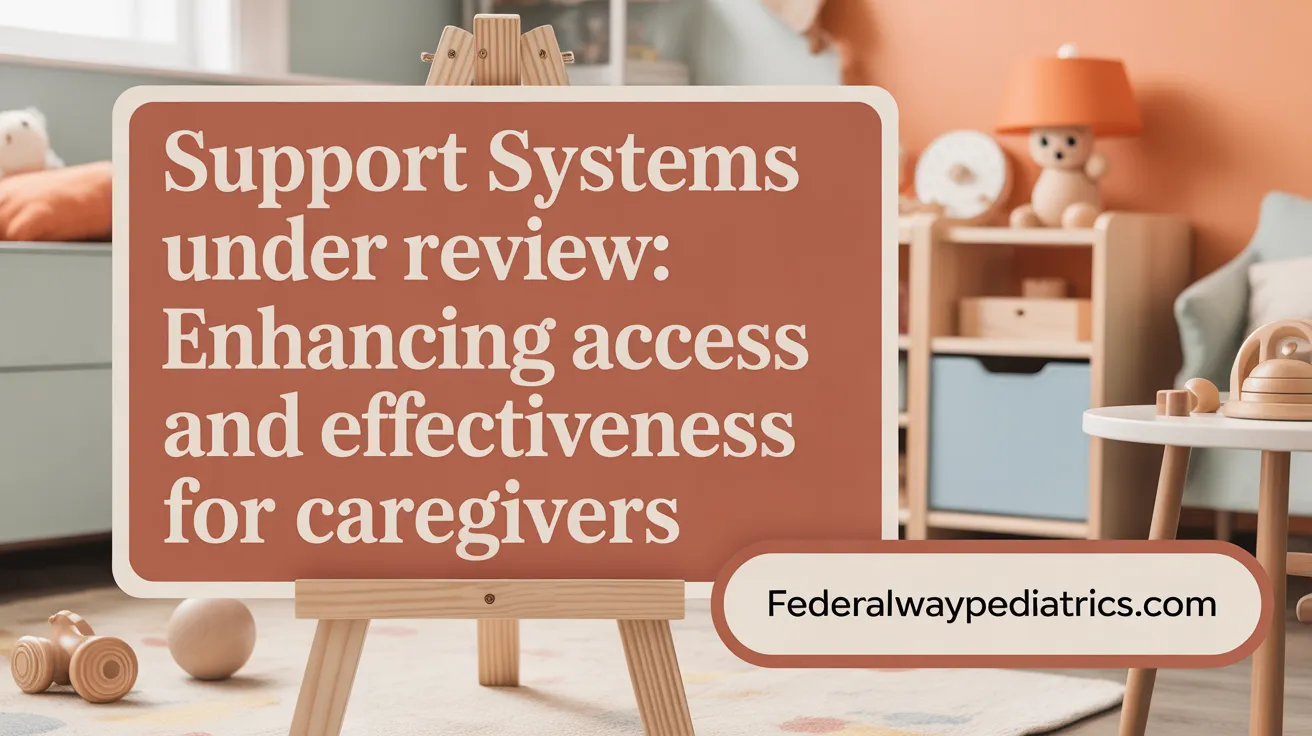 Support systems designed for caregivers of children with special health needs aim to provide essential therapies, educational assistance, and mental health resources. While these resources are crucial, their success varies widely across different communities and individual circumstances.
Support systems designed for caregivers of children with special health needs aim to provide essential therapies, educational assistance, and mental health resources. While these resources are crucial, their success varies widely across different communities and individual circumstances.
Many caregivers report that access to these services is often inconsistent. Barriers such as complex eligibility criteria, transportation difficulties, language barriers, and cultural differences frequently hinder their ability to utilize available support effectively. For example, families living in rural or underserved urban areas may struggle to reach specialized services due to distance or lack of transportation.
Despite these challenges, strengths of current systems include the presence of community collaborations and resource networks that help connect families to necessary services. These partnerships facilitate resource sharing and can improve care continuity.
However, a significant weakness lies in inadequate screening and referral processes. Healthcare providers and social services professionals sometimes lack sufficient knowledge or training about available resources, which delays or prevents appropriate referrals for families who need them. Additionally, gaps in provider familiarity with community-specific needs limit culturally sensitive support.
Opportunities to enhance these systems focus on tailored, community-specific interventions. Improving information dissemination through outreach campaigns and by simplifying referral pathways can significantly increase access. Training healthcare providers to better identify and connect families to resources, as well as developing culturally appropriate programs, could also bridge existing gaps.
External threats include bureaucratic hurdles, staffing shortages, and persistent disparities faced by marginalized or minority populations. These issues exacerbate inequities in service delivery and hinder efforts to ensure comprehensive support for all families. Addressing these barriers is essential to creating more effective and accessible support systems for caregivers.
Obstacles and Challenges Faced by Caregivers Accessing Support Services
What challenges and obstacles do caregivers face in accessing support services for children with disabilities?
Caregivers of children with disabilities often face a complex array of obstacles that hinder their ability to access vital support services. Systemic barriers such as long waiting lists, limited availability of specialized services, strict eligibility criteria, and difficulties with transportation pose significant delays and obstacles. These factors make it challenging for families to get timely care for their children.
Communication gaps also play a major role. Caregivers sometimes lack clear, accessible information about available programs, support options, and how to navigate the healthcare or educational systems. This lack of awareness can cause delays in obtaining services necessary for their child's development.
The emotional and physical health burdens encountered by caregivers—such as chronic stress, fatigue, social isolation, and feelings of stigma—further impede their capacity to seek out and utilize available supports. Stress and fatigue can diminish motivation and energy needed to pursue assistance.
Societal attitudes and stigma surrounding disabilities can diminish community support and recognition. Some caregivers feel judged or misunderstood, which discourages them from seeking help or participating in community-based services.
Additionally, navigating the complexities of healthcare systems, insurance policies, and social services often overwhelms caregivers. The fragmented nature of these systems, along with bureaucratic procedures, complicates access and adds frustration.
In summary, these shared challenges—systemic, informational, emotional, societal, and bureaucratic—combine to create substantial barriers. Overcoming these obstacles is crucial to improving support access, caregiver well-being, and the development prospects of children with disabilities.
Extensive Scope of Caregiving Needs for Families of Children with Disabilities
What is the scope of caregiving needs and associated data for families of children with disabilities?
The caregiving landscape for families of children with disabilities covers a broad array of needs that extend into health, education, welfare, social participation, and access to information. These families often face complex challenges that require a coordinated approach to support.
From a health perspective, caregivers need consistent access to medical care, including diagnosis, ongoing treatment, and rehabilitation services. For children with neurodevelopmental and other complex conditions, specialized healthcare and mental health services are vital to their development and well-being.
In terms of welfare and financial support, families frequently encounter substantial costs related to medical treatments, therapy, assistive devices, and transportation. Many families experience financial strain, with some facing unmet care needs due to high costs and limited service availability.
Educational efforts and social integration are also critical. Children with disabilities benefit from inclusive education, tailored curricula, and vocational opportunities that promote independence and social participation. However, their engagement in school is often lower compared to typically developing peers, highlighting the importance of effective educational support.
The need for coordinated efforts across healthcare, education, and social services is clear. Families often find navigating fragmented systems challenging, which hampers access to necessary resources. Establishing integrated care programs and policy frameworks can streamline services and improve outcomes.
Caregivers also actively seek reliable information about disabilities and caregiving techniques to effectively support their children's growth. Training programs and caregiver education enhance skills, reduce stress, and foster resilience.
In summary, supporting families of children with disabilities requires a multi-dimensional approach. This encompasses timely medical interventions, financial aid, inclusive education, social support, and ongoing caregiver training. Collaboration among healthcare providers, policymakers, and community organizations is essential to meet these diverse needs, especially considering disparities in resources between different regions or countries.
Caregiver Health Insurance Coverage and Routine Care Patterns

Are caregivers of children with disabilities well-covered by health insurance?
Most adult caregivers, especially those caring for children with special needs, report having some form of health insurance. For caregivers aged 45 years and older, detection rates of health coverage are very high, with approximately 94.9% reporting coverage, and even higher among those aged 65 and older at 98.9%. This widespread coverage helps ensure access to necessary healthcare services and ongoing medical support.
How frequently do caregivers undergo routine medical checkups?
Regular health monitoring is crucial for caregivers managing chronic stress and physical health issues. Data shows that about 79.3% of caregivers aged 45 and above have had a routine checkup within the past year. Routine visits enable early detection and management of health problems, which is vital for maintaining the caregiver’s well-being.
Why is health monitoring important for caregivers?
Caregiver populations face higher risks of physical and mental health issues, including chronic diseases, fatigue, and depression. Consistent health checkups and screenings are protective measures that help identify problems early and facilitate timely interventions. Maintaining good health through regular medical care is essential not only for caregivers’ personal health but also for their capacity to provide sustained support for children with disabilities.
| Aspect | Data/Statistics | Significance |
|---|---|---|
| Health insurance coverage | 94.9% (ages 45+) and 98.9% (ages 65+) | Ensures access to healthcare services |
| Routine checkups in past year | 79.3% of caregivers aged 45+ | Promotes regular health monitoring |
| Chronic illness prevalence | 40.7% report two or more chronic diseases | Highlights need for ongoing health management |
| Unhealthy days experienced | 14+ days of both mental and physical unhealthiness in 1 month | Indicates high stress and health burden |
This underscores the importance of continuous health insurance coverage and regular medical checkups in supporting the health of caregivers, especially those caring for children with complex needs.
Economic Impact and Financial Strain Among Families Caring for Children with Disabilities
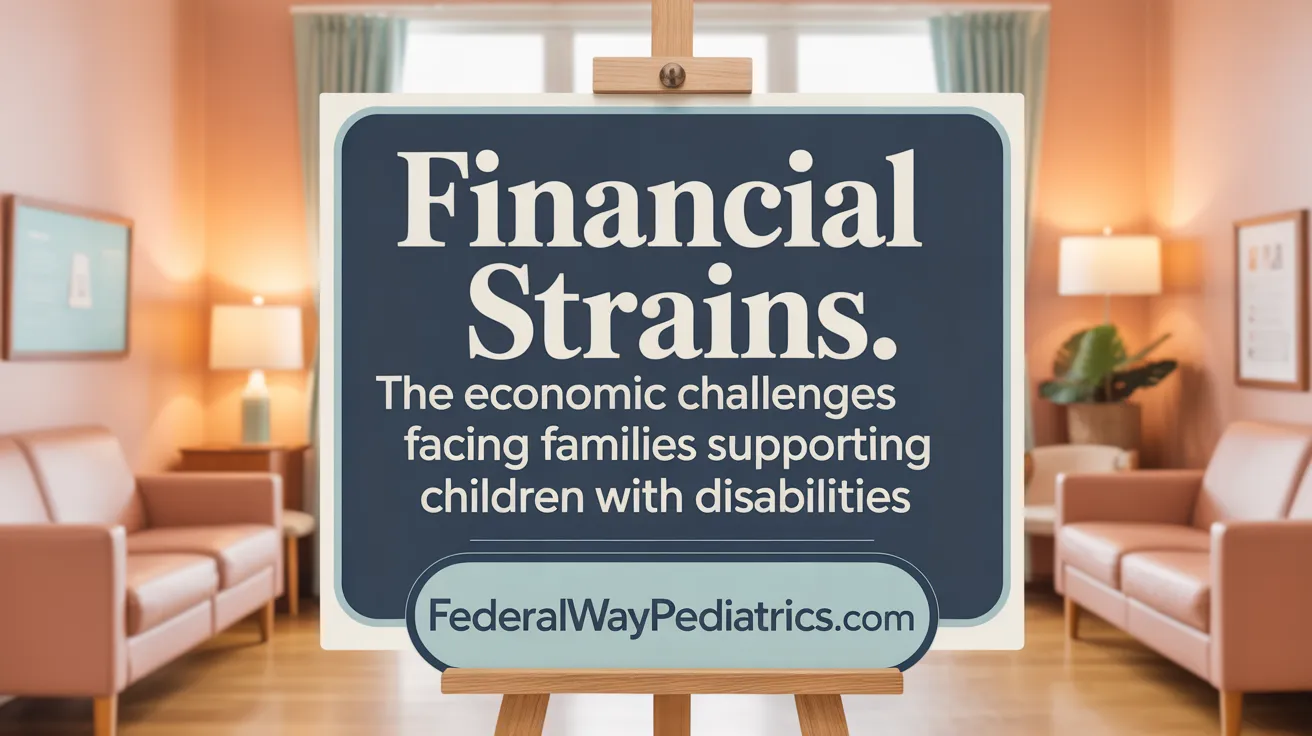
Financial burden due to health services, medication, and specialized equipment
Families caring for children with disabilities often face significant financial challenges. The necessity for additional health services, medications, transportation, and specialized equipment contributes to high expenses. About half of these families report financial burdens directly related to meeting their child's complex needs, which can strain household resources and impact overall well-being.
Higher incidence of household food insufficiency
Children with special health care needs are more vulnerable to household food insecurity. Research indicates that 42% of families with children with disabilities experience food insufficiency, compared to 31% among families without such needs. This food insecurity can affect the child's health and development, further compounding family stress.
Work-life balance challenges influenced by organizational culture
Caregivers employed while caring for children with disabilities often grapple with maintaining a healthy work-life balance. The organizational work-family culture plays a crucial role, where supportive management and flexible policies can ease this burden. Conversely, high organizational demands and negative career impacts exacerbate stress, making it harder for caregivers to balance their responsibilities.
Economic assistance needs to alleviate caregiver burden
Given the financial and emotional challenges, there is a pressing need for targeted economic support. Providing financial assistance and caregiver training can help reduce the burden, improve life quality, and ensure better access to essential services. Strategies such as state funding, special programs, and community resources are vital to support familles and lessen economic hardship.
| Aspect | Impact | Additional Notes |
|---|---|---|
| Health-related expenses | High | Medication, equipment, services |
| Food security | Increased risk | 42% experience insufficiency |
| Work-life balance | Challenged | Organizational culture influences stress |
| Economic support | Essential | To reduce overall family burden |
The Role of Respite Care and Social Support Networks in Reducing Caregiver Stress

Respite care as temporary relief
Respite care offers caregivers a much-needed break by providing planned or emergency care for children with special needs. This temporary relief can help reduce physical and emotional exhaustion, helping caregivers recharge and regain their strength.
Benefits of support groups and peer engagement
Joining support groups, whether in person or via social media, allows caregivers to connect with others facing similar challenges. These connections provide emotional comfort, practical advice, and a sense of community, which can significantly help reduce feelings of isolation and stress.
Parent training programs for behavior management
Parent training programs teach caregivers effective strategies to manage problematic behaviors in children with disabilities. These programs equip parents with skills that improve child behavior, lessen frustration, and contribute to a more positive caregiving experience.
Stress reduction strategies including mindfulness and CBT
Caregivers can adopt various stress management techniques such as mindfulness, meditation, and cognitive-behavioral therapy (CBT). These strategies help manage anxiety, improve emotional resilience, and promote overall mental well-being.
| Support Measure | Description | Impact on Caregiver Stress |
|---|---|---|
| Respite Care | Temporary relief services | Reduces exhaustion and burnout |
| Support Groups | Peer engagement networks | Offers emotional support and shared experiences |
| Parent Training Programs | Child behavior management | Decreases frustration and improves child outcomes |
| Stress Reduction Techniques | Mindfulness, CBT | Enhances mental health and resilience |
Implementing these supports can significantly improve the quality of life for caregivers and their children with disabilities. Combining practical help with emotional and psychological strategies creates a more sustainable caregiving environment.
The Growing Demographic of Family Caregivers and Future Caregiving Demands
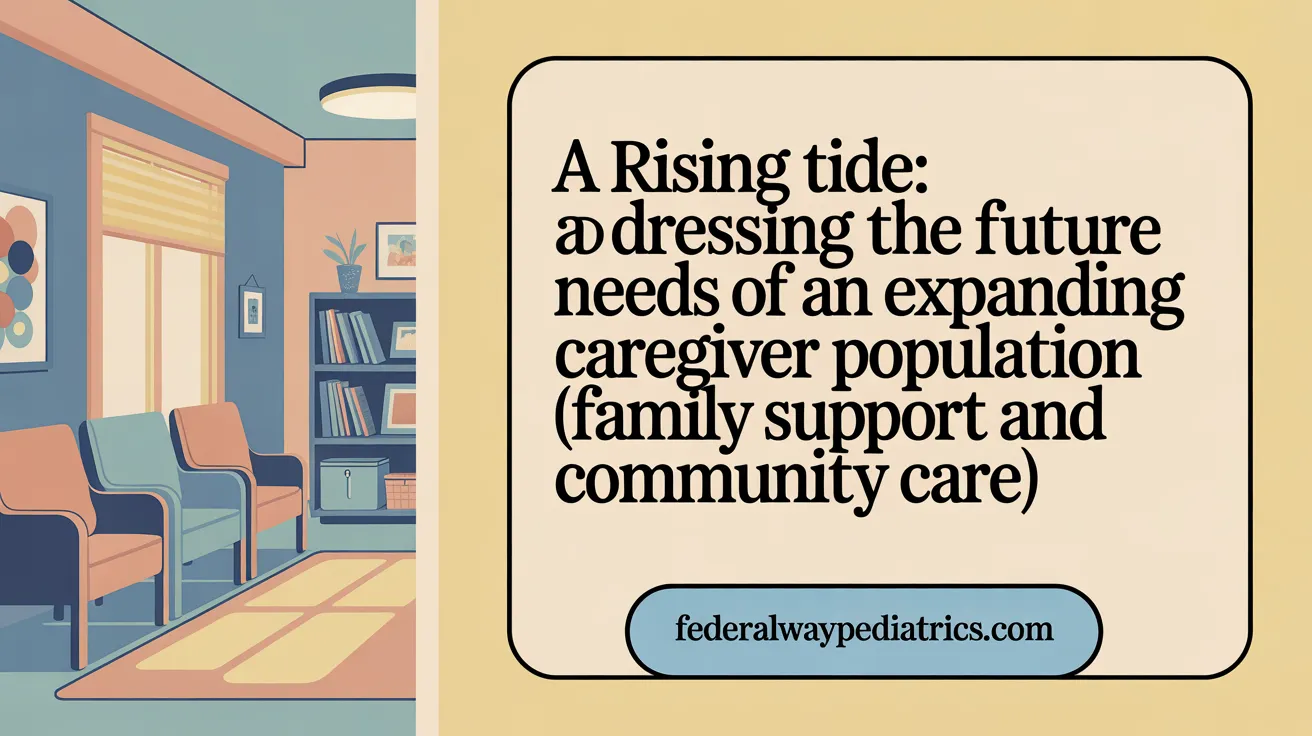
Prevalence of adult caregivers aged 45 and older
Nearly one in five adults aged 45 years or older in the United States provides care or assistance to a family member or friend. This age group, especially those between 45 and 64 years, comprises a significant portion of caregivers, with about 24.4% actively involved in caregiving roles. Many of these caregivers provide extensive support, often exceeding 20 hours weekly, reflecting the substantial demand for caregiving services.
Gender differences in caregiving roles
Women are more likely than men to serve as family caregivers. About 25.4% of women provide care compared to 18.9% of men. This disparity is partly due to traditional gender roles, especially in countries like Turkey, where mothers primarily handle child care responsibilities, which increases their stress and burden.
Projected increase in caregiving needs
The future outlook indicates a rising demand for caregiving services. Currently, around 14.5% of caregivers expect to provide care or assistance within the next two years, highlighting an anticipated growth in caregiving responsibilities. Additionally, while many caregivers are already managing multiple chronic health conditions, their needs and the necessity for support are expected to grow.
Implications for healthcare and social systems
This expanding caregiver population poses significant challenges for healthcare, social, and economic systems. Caregivers often experience poor physical and mental health, with increased risks for chronic diseases like heart conditions, diabetes, and depression. Supporting this demographic through targeted policies, such as caregiver assessments, improved healthcare access, and community support programs, is vital to sustaining their wellbeing and ensuring they continue to meet the demands of their loved ones.
| Aspect | Current Data | Future Projections | Additional Notes |
|---|---|---|---|
| Caregivers by age | 19% of children’s caregivers are aged 45+ | Increasing caregivers in this age group | Growing need for support for middle-aged and older adults |
| Gender distribution | 25.4% women, 18.9% men | Continued gender disparities | Women face higher burdens due to traditional roles |
| Caregiving duration | 53.8% ≥ 24 months | Longer periods of care expected | Reflects chronic caregiving demands |
| Health impacts | High prevalence of chronic conditions | Worsening health outcomes if unsupported | Importance of healthcare support systems |
Understanding these demographic trends helps shape policies to better support caregivers and address the expanding needs of families caring for disabled children and adults.
Impact of Child Disability Severity and Behavioral Challenges on Caregiver Stress

How does the severity of cerebral palsy in children affect caregiver psychological outcomes?
The intensity of a child's cerebral palsy significantly influences the caregiver's mental health and overall burden. Studies indicate that the more severe the child's disability, the greater the support required from caregivers. This increased support need typically leads to heightened stress, anxiety, and depressive symptoms among caregivers. As the child's needs grow more complex, caregivers often experience greater psychological strain, negatively impacting their well-being.
In what ways do behavioral challenges in children with CP elevate emotional strain for caregivers?
Children with cerebral palsy frequently face behavioral issues such as aggression, difficulty with self-regulation, or emotional outbursts. These challenges can be particularly distressing for caregivers, as managing problematic behaviors demands extra patience, time, and emotional resilience. Such ongoing behavioral difficulties contribute substantially to feelings of exhaustion, guilt, and frustration in caregivers, further elevating their overall stress levels.
How does a child's mental health diagnosis influence caregiver well-being?
When a child with CP also receives a mental health diagnosis like anxiety, depression, or ADHD, the caregiver's emotional challenges often intensify. The additional need to manage mental health symptoms amplifies caregiver burden, often leading to higher incidences of depression and anxiety among caregivers. Moreover, mental health conditions in children can complicate daily routines, increase caregiving duties, and strain familial relationships, all of which impact the caregiver's psychological health.
| Child Condition Severity | Behavioral Challenges | Mental Health Diagnosis | Effect on Caregiver Well-being |
|---|---|---|---|
| Mild to Moderate CP | Mild behavioral issues | Sometimes present | Moderate stress, manageable |
| Severe CP with complex behaviors | Severe behavioral issues, aggression | Often comorbid | High stress, risk of depression |
Understanding how the severity and behavioral aspects of cerebral palsy affect caregivers can guide targeted support strategies, such as psychological interventions and respite care, to alleviate their burden.
Data Collection and Research Needs to Improve Support for Family Caregivers
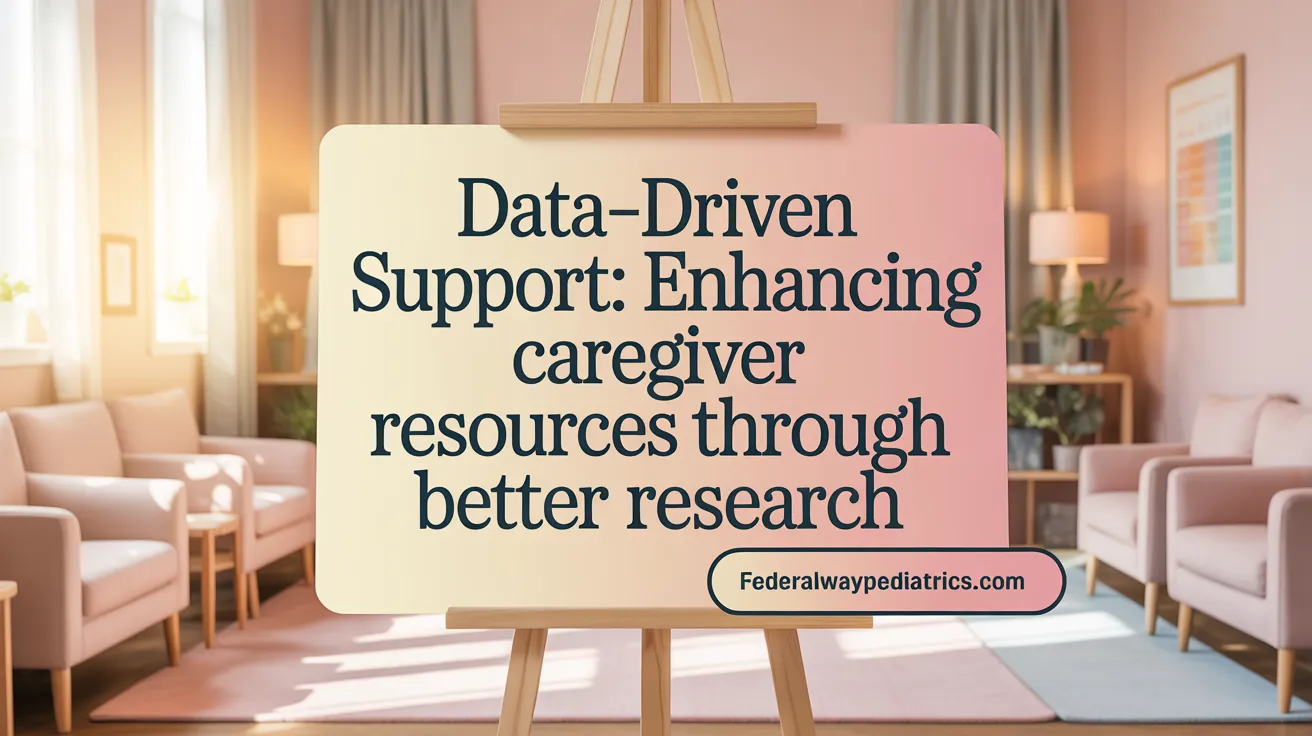
Current data sources and state strategies
Understanding the needs of family caregivers of children with disabilities relies heavily on data collection efforts. The Centers for Disease Control and Prevention's (CDC) Behavioral Risk Factor Surveillance System (BRFSS) Caregiver module is the primary standardized national data source, although participation is optional for states. States are adopting various strategies to enhance data collection, including expanding caregiver definitions to encompass more populations, administering specialized modules within BRFSS, and implementing caregiver assessments and plans of care.
Some states are pioneering efforts to evaluate services and identify gaps. For example, Washington State evaluates caregiver assessments to inform Medicaid programs, while California and Minnesota analyze service reach and system gaps. These efforts support the development of targeted interventions and policy planning.
Challenges in caregiver data collection
Collecting comprehensive data on caregivers presents several challenges. Limited resources and differing state priorities can restrict data collection efforts. Additionally, most data are cross-sectional, providing limited insights into the long-term impact of caregiving. Variability in caregiver definitions and measurement tools also hampers data comparability.
Data on caregiver demographics, health outcomes, and service utilization are often incomplete, making it difficult to develop tailored support programs. Without consistent, detailed data, policymakers and service providers cannot fully understand or address the complex needs of caregivers for children with special needs.
Importance of longitudinal and high-quality research
Long-term, high-quality research is essential to grasp how caregiver burdens evolve and to evaluate intervention effectiveness. Few longitudinal studies currently exist, highlighting a significant gap. Such studies could illuminate trends over time, impacts of caregiving on physical and mental health, and the effects of various support mechanisms.
Investing in rigorous research will enable better-informed policies and programs, leading to improved quality of life for caregivers and better outcomes for children. Future research should prioritize diverse populations, including underserved communities, to ensure equitable support.
Evidence-based program implementation
Implementing programs founded on solid evidence is vital. Promising practices include utilizing caregiver assessments in Medicaid evaluation, deploying parent training programs, and integrating family perspectives into care plans. These initiatives have demonstrated potential in reducing caregiver burden and improving wellbeing.
By systematically evaluating these programs and scaling effective approaches, states and organizations can create a supportive environment that addresses both immediate and long-term needs of caregivers. Continued research and data collection will be the backbone of refining these strategies for maximum impact.
Toward a Holistic Approach in Supporting Disabled Children Caregivers
Caregivers of children with disabilities face a profound, multifaceted burden that spans physical health challenges, psychological stress, social isolation, and significant financial strain. Although various support systems exist, barriers to access and variable effectiveness hinder many families from fully benefiting from these resources. Research underlines the need for targeted, culturally sensitive, and coordinated support services that are accessible and responsive to caregivers’ diverse needs. Enhanced data collection and longitudinal studies are essential to inform policy and optimize interventions. As caregiving demands expand with demographic shifts, a holistic approach integrating healthcare, education, social support, and economic assistance will be crucial to alleviate caregiver burden and promote the well-being of both children with disabilities and their families.
References
- Factors associated with caregiver burden among family ...
- Caregiver Burden in Caregivers of Children With Special ...
- Children With Disabilities and Special Health Care Needs
- FAMILY CAREGIVERS OF CHILDREN WITH DISABILITIES
- Investigating the caregiving burden and stress of mothers ...
- Caregivers of Children with Special Healthcare Needs
- Using Research, Data, and Evidence-Informed Practices to ...
- Caregiving for Family and Friends — A Public Health Issue
